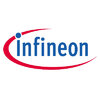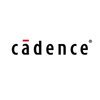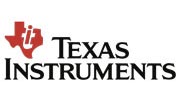Filter interviews by
Carl Zeiss Graduate Trainee Interview Questions and Answers
Carl Zeiss Graduate Trainee Interview Experiences
1 interview found
I applied via Campus Placement and was interviewed in Mar 2023. There were 4 interview rounds.

Have to find number of points common to a rectangle and circle given few conditions
(2 Questions)
- Q1. Questions from resume
- Q2. Sliding Window concepts in bit vector manipulation
- Ans.
Sliding window concept involves moving a fixed-size window across a data structure to perform operations.
Sliding window technique is commonly used in array manipulation to solve problems efficiently.
It involves maintaining a window of fixed size while iterating through an array and updating the window based on certain conditions.
For example, in bit vector manipulation, sliding window can be used to efficiently count th...
(2 Questions)
- Q1. Three values a human should posses
- Ans.
Compassion, integrity, and resilience are three values a human should possess.
Compassion: showing empathy and kindness towards others
Integrity: being honest and having strong moral principles
Resilience: the ability to bounce back from challenges and setbacks
- Q2. Family Background
Skills evaluated in this interview
Top trending discussions







Interview questions from similar companies

I appeared for an interview in Feb 2025, where I was asked the following questions.
- Q1. About project in dept
- Q2. About Software Development Life Cycle and how to use it in projects
- Q3. How to build the chatbots for different kinds of users
- Ans.
Building chatbots for diverse users involves understanding their needs, preferences, and contexts to enhance user experience.
Identify user personas: Understand different user types (e.g., tech-savvy vs. non-tech-savvy) to tailor interactions.
Utilize natural language processing: Implement NLP to understand and respond to user queries in a conversational manner.
Incorporate user feedback: Regularly collect and analyze use...

Graduate Trainee Interview Questions & Answers
Infineon Technologiesposted on 14 Jun 2024
I applied via Campus Placement and was interviewed before Jun 2023. There were 2 interview rounds.
Difficulty level is 4/5
(2 Questions)
- Q1. Basics of C and pointers
- Q2. Whats is the null pointer
- Ans.
A null pointer is a pointer that does not point to any memory location.
Null pointers are used in programming languages to represent that a pointer does not point to a valid object or memory location.
Attempting to dereference a null pointer can result in a segmentation fault or other runtime error.
Example: int* ptr = nullptr; // ptr is a null pointer
Skills evaluated in this interview

I applied via Naukri.com and was interviewed before Dec 2021. There were 3 interview rounds.

(3 Questions)
- Q1. Tell me about kiazen,and 7qc tools
- Ans.
Kaizen is a Japanese term for continuous improvement and 7QC tools are quality control techniques used to identify and solve problems.
Kaizen involves making small, incremental improvements to processes and systems to increase efficiency and reduce waste.
7QC tools include Pareto charts, cause-and-effect diagrams, flowcharts, histograms, scatter diagrams, control charts, and check sheets.
These tools are used to analyze d...
- Q2. Tell me about 8D analysis, & six Sigma, SPC
- Ans.
8D analysis, Six Sigma, and SPC are quality control methodologies used in production engineering.
8D analysis is an eight-step problem-solving methodology used to identify, correct, and prevent recurring problems.
Six Sigma is a data-driven approach to quality control that aims to reduce defects and improve processes.
SPC (Statistical Process Control) is a method of monitoring and controlling a process to ensure it operat...
- Q3. Explain about OEE, & explain about 5 types of wastes
- Ans.
OEE is a metric used to measure manufacturing productivity. 5 types of wastes are defects, overproduction, waiting, non-utilized talent, and transportation.
OEE stands for Overall Equipment Effectiveness and is a measure of how effectively a manufacturing operation is utilized
It is calculated by multiplying availability, performance, and quality
The 5 types of wastes are defects, overproduction, waiting, non-utilized tal...
(3 Questions)
- Q1. Tell me about yourself, about your background
- Q2. What is your responsibility in shop floor
- Q3. What are your skills
Interview Preparation Tips

(1 Question)
- Q1. Describe virtual functions
- Ans.
Virtual functions allow a function to be overridden in a derived class, enabling polymorphic behavior.
Virtual functions are declared in a base class with the 'virtual' keyword.
They are meant to be overridden in derived classes to provide specific implementations.
When a virtual function is called through a base class pointer or reference, the actual function to be executed is determined at runtime based on the object's ...

Quality Engineer Interview Questions & Answers
TDK India Private Limitedposted on 11 Nov 2021
I applied via Campus Placement and was interviewed in Oct 2021. There were 4 interview rounds.
Interview Questionnaire
2 Questions
- Q1. What is Poka-yoke?
- Ans.
Poka-yoke is a quality control technique used to prevent errors or mistakes in a process.
Poka-yoke is a Japanese term meaning 'mistake-proofing' or 'error-proofing'.
It involves designing a process or system in a way that makes it impossible or difficult to make mistakes.
Poka-yoke techniques can include using sensors, alarms, guides, or physical devices to prevent errors.
Examples of poka-yoke include car ignition system...
- Q2. What are the check points given by the customer in the power bank?
- Ans.
The check points given by the customer in the power bank include battery capacity, charging time, safety features, and compatibility.
Battery capacity: Customers may specify the desired capacity of the power bank, such as 10,000mAh or 20,000mAh.
Charging time: Customers may expect the power bank to charge their devices within a specific time frame, like 2 hours or less.
Safety features: Customers may require the power ban...
Interview Preparation Tips

I applied via Company Website and was interviewed in Nov 2023. There was 1 interview round.
(4 Questions)
- Q1. What is SPC, How we will calculate Cp and Cpk, Difference b/w sigma and Std dev, Which should be concentrate first whether Cp or Cpk
- Ans.
SPC is Statistical Process Control used to monitor and control quality. Cp and Cpk measure process capability. Sigma is population standard deviation.
SPC is a statistical method used to monitor and control processes to ensure quality standards are met.
Cp and Cpk are indices used to measure process capability. Cp measures how well the process fits within the specification limits, while Cpk measures how centered the proc...
- Q2. Drawing details GD and T., What is basic dimensions, MMC, LMC, where it will be used
- Q3. What is MSA, GAGE R and R, What is output in GRR, what will be be change based on result in GRR whether Instrument or Appraiser training, what NDC and how it will affect process
- Ans.
MSA stands for Measurement System Analysis. GAGE R&R is a method to assess measurement system variation. NDC refers to the Number of Distinct Categories.
MSA is a statistical method used to evaluate the measurement system's ability to provide accurate and reliable data.
GAGE R&R is a specific MSA technique used to assess the variation contributed by the measurement system itself.
The output of GAGE R&R is typically expres...
- Q4. Six sigma process, Where Spc will come in Six sigma process
- Ans.
SPC (Statistical Process Control) is a key tool in the Six Sigma process for monitoring and controlling process variation.
SPC is used to collect and analyze data in real-time to ensure that a process is stable and capable of meeting customer requirements.
It involves the use of control charts to monitor process performance and identify any special causes of variation.
SPC helps in identifying and addressing process issue...

Production Engineer Interview Questions & Answers
TDK India Private Limitedposted on 20 Jan 2024
I applied via Recruitment Consulltant and was interviewed in Dec 2023. There were 3 interview rounds.
MCQ type exam to qualify for the technical interview.
(6 Questions)
- Q1. What is Capacitor?
- Ans.
A capacitor is an electronic component that stores and releases electrical energy.
A capacitor consists of two conductive plates separated by an insulating material called dielectric.
It stores electrical energy in an electric field between the plates.
Capacitors are commonly used in electronic circuits for energy storage, filtering, timing, and coupling.
They can be found in various devices such as power supplies, amplifi...
- Q2. What is Power factor?
- Ans.
Power factor is a measure of how effectively electrical power is being used in a circuit.
Power factor is the ratio of real power (kW) to apparent power (kVA) in an AC circuit.
It indicates the efficiency of power usage and the presence of reactive power.
A power factor of 1 indicates all power is being used effectively, while a power factor less than 1 indicates inefficiency.
Inductive loads (e.g., motors) have lagging po...
- Q3. How the motor started works?
- Ans.
The motor starter is a device that starts and stops the motor by controlling the flow of electrical power.
The motor starter consists of a contactor, overload relay, and control circuit.
When the start button is pressed, the control circuit energizes the coil of the contactor, closing its contacts and allowing current to flow to the motor.
The overload relay protects the motor from excessive current by sensing the current...
- Q4. Types of motor - specifically the capacitor start and run motors.
- Ans.
Capacitor start and run motors are types of motors commonly used in various applications.
Capacitor start motors use a capacitor to provide high starting torque and are commonly used in appliances like air conditioners and refrigerators.
Capacitor run motors use a capacitor to improve the motor's efficiency and power factor, and are often found in fans, pumps, and compressors.
Both types of motors have advantages and disa...
- Q5. Types of capacitor and its function.
- Ans.
Capacitors are electronic components that store and release electrical energy. They come in various types and have different functions.
Electrolytic capacitors are commonly used in power supply circuits to smooth out voltage fluctuations.
Ceramic capacitors are used for high-frequency applications and noise suppression.
Film capacitors are suitable for applications requiring high voltage and high current handling.
Tantalum...
- Q6. What is dielectric?
- Ans.
Dielectric is a material that does not conduct electricity but can store and transmit electric charge.
Dielectric materials have high electrical resistance.
They are used in capacitors to store and release electrical energy.
Examples of dielectric materials include glass, rubber, and plastic.
Dielectric strength is a measure of a material's ability to withstand electrical stress without breaking down.
Dielectric constant is...
(1 Question)
- Q1. Which department would you like to work with to contribute to the organization?
Interview Preparation Tips
Go confidently with what the questions are.
If you face any difficulties in languages to deliver or what you want to express you can ask interviewer for language choice.

Production Engineer Interview Questions & Answers
TDK India Private Limitedposted on 29 Dec 2024
(1 Question)
- Q1. Manpower handling Achieve target

(1 Question)
- Q1. What is the application of thermal boundary layer
- Ans.
The thermal boundary layer is a thin layer of fluid near a solid surface where heat transfer occurs mainly by conduction.
It is important in heat transfer analysis and design of cooling systems.
Helps in understanding the temperature distribution near a solid surface.
Used in designing heat exchangers, cooling fins, and other thermal management systems.
Carl Zeiss Interview FAQs
Tell us how to improve this page.
Carl Zeiss Interviews By Designations
- Carl Zeiss Sales Consultant Interview Questions
- Carl Zeiss Application Specialist Interview Questions
- Carl Zeiss Data Engineer Interview Questions
- Carl Zeiss FSE Interview Questions
- Carl Zeiss Product Manager Interview Questions
- Carl Zeiss Graduate Trainee Interview Questions
- Carl Zeiss Business Analyst Interview Questions
- Carl Zeiss Design Engineer Interview Questions
- Show more
Interview Questions for Popular Designations
- Graduate Engineer Trainee (Get) Interview Questions
- Graduate Engineer Interview Questions
- Production Graduate Engineer Trainee Interview Questions
- Graduate Apprentice Trainee Interview Questions
- Graduate Apprenticeship Trainee Interview Questions
- Graduate Student Interview Questions
- Graduate Apprentice Interview Questions
- Post Graduate Engineer Trainee [pget] Interview Questions
- Show more
Carl Zeiss Graduate Trainee Interview Process
based on 1 interview
Interview experience
Interview Questions from Similar Companies
Fast track your campus placements
|
Sales Associate
88
salaries
| ₹3.3 L/yr - ₹8 L/yr |
|
Sales Specialist
63
salaries
| ₹6 L/yr - ₹16.3 L/yr |
|
Field Service Engineer
40
salaries
| ₹4.8 L/yr - ₹11.5 L/yr |
|
Sales Executive
33
salaries
| ₹1.8 L/yr - ₹9.5 L/yr |
|
Technical Lead
31
salaries
| ₹20 L/yr - ₹36 L/yr |

TDK India Private Limited

Molex

Synopsys

Broadcom
- Home >
- Interviews >
- Carl Zeiss Interview Questions >
- Carl Zeiss Graduate Trainee Interview Questions











